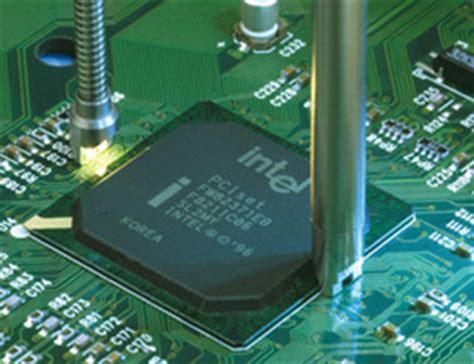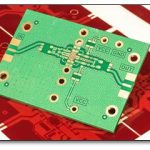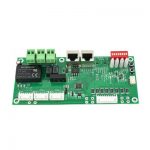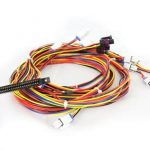What is Mixed Assembly?
Mixed assembly is a manufacturing technique that combines both automated and manual assembly processes to create a final product. This approach leverages the strengths of both human workers and machines to achieve optimal efficiency, quality, and flexibility in the production process.
In a mixed assembly system, certain tasks are performed by automated equipment, such as robots or computer-controlled machines, while other tasks are carried out by human workers. The allocation of tasks between machines and humans depends on factors such as complexity, precision requirements, and the need for adaptability.
Advantages of Mixed Assembly
-
Flexibility: Mixed assembly allows for greater flexibility in the production process. Human workers can handle tasks that require adaptability, problem-solving, or decision-making, while machines can perform repetitive, precise, or hazardous tasks.
-
Quality: By combining the strengths of humans and machines, mixed assembly can lead to higher product quality. Automated processes ensure consistency and precision, while human workers can identify and address potential quality issues.
-
Efficiency: Mixed assembly can improve overall production efficiency by optimizing the allocation of tasks between humans and machines. Automated processes can work continuously and at high speeds, while human workers can focus on tasks that require their unique skills.
-
Cost-effectiveness: Implementing a mixed assembly system can be more cost-effective than fully automated or fully manual assembly. It allows companies to invest in automation where it provides the most value while maintaining the benefits of human labor where needed.
-
Scalability: Mixed assembly systems can be scaled up or down more easily than fully automated systems. Adding or removing human workers is generally simpler and less expensive than modifying or expanding automated equipment.
Key Components of Mixed Assembly
Automated Equipment
Automated equipment in mixed assembly can include various types of machines, such as:
-
Robots: Industrial robots are commonly used in mixed assembly for tasks such as pick-and-place, welding, painting, and material handling. They offer high precision, speed, and repeatability.
-
Computer Numerical Control (CNC) Machines: CNC machines are used for tasks that require precise cutting, drilling, or machining. They can produce complex shapes and features with high accuracy.
-
Automated Guided Vehicles (AGVs): AGVs are mobile robots that can transport materials or partially assembled products between different workstations in a mixed assembly line.
-
Automated Inspection Systems: These systems use sensors, cameras, or other technologies to inspect products for defects or inconsistencies, ensuring Quality Control in the assembly process.
Human Workers
Human workers play a crucial role in mixed assembly, performing tasks that require skills such as:
-
Assembly: Human workers can handle complex or delicate assembly tasks that are difficult to automate, such as fitting small parts or making adjustments based on visual inspection.
-
Quality Control: Human workers can visually inspect products for defects or inconsistencies that automated systems might miss, ensuring a higher level of quality control.
-
Problem-solving: When issues arise in the assembly process, human workers can use their problem-solving skills to identify and address the root cause, minimizing downtime and maintaining production flow.
-
Maintenance: Human workers are responsible for maintaining and troubleshooting automated equipment, ensuring that it operates at optimal performance levels.
Implementing Mixed Assembly
When implementing a mixed assembly system, several key considerations should be taken into account:
-
Task Allocation: Determine which tasks are best suited for automation and which tasks require human intervention. Consider factors such as complexity, precision requirements, and the need for adaptability.
-
Workflow Design: Design the assembly workflow to optimize the interaction between human workers and automated equipment. Consider factors such as workstation layout, material flow, and ergonomics.
-
Training: Provide adequate training to human workers on how to work alongside automated equipment safely and efficiently. This may include training on safety protocols, machine operation, and problem-solving techniques.
-
Integration: Ensure that the automated equipment and human workstations are properly integrated and synchronized to avoid bottlenecks or delays in the assembly process.
-
Continuous Improvement: Regularly assess the performance of the mixed assembly system and identify opportunities for improvement. This may involve updating equipment, refining workflows, or providing additional training to workers.

Real-World Examples
Mixed assembly is used across various industries, from automotive and aerospace to consumer electronics and medical devices. Here are a few examples of how mixed assembly is applied in different sectors:
Automotive Industry
In the automotive industry, mixed assembly is commonly used to produce vehicles and their components. For example:
| Assembly Task | Automated Equipment | Human Workers |
|---|---|---|
| Body welding | Robotic welding cells | Inspection and quality control |
| Painting | Automated paint shops | Touch-up and detailing |
| Final assembly | Automated conveyors and AGVs | Complex assembly tasks and quality checks |
Consumer Electronics
Mixed assembly is also prevalent in the consumer electronics industry, where products such as smartphones, laptops, and home appliances are manufactured. For instance:
| Assembly Task | Automated Equipment | Human Workers |
|---|---|---|
| PCB Assembly | Pick-and-place machines | Manual soldering and inspection |
| Display assembly | Automated bonding machines | Alignment and quality control |
| Final assembly | Automated testing equipment | Packaging and manual assembly of small components |
Medical Devices
In the medical device industry, mixed assembly is used to produce a wide range of products, from syringes and catheters to implantable devices and diagnostic equipment. For example:
| Assembly Task | Automated Equipment | Human Workers |
|---|---|---|
| Injection molding | Automated molding machines | Inspection and packaging |
| Catheter assembly | Automated bonding and cutting machines | Manual assembly of delicate components |
| Device testing | Automated testing equipment | Manual verification and documentation |
Frequently Asked Questions (FAQ)
-
What are the main benefits of mixed assembly?
Mixed assembly offers several benefits, including increased flexibility, improved product quality, enhanced efficiency, cost-effectiveness, and scalability. By combining the strengths of human workers and automated equipment, mixed assembly can optimize the production process and achieve better results than fully manual or fully automated systems. -
How does mixed assembly differ from traditional assembly methods?
Traditional assembly methods typically involve either fully manual or fully automated processes. In fully manual assembly, human workers perform all tasks, which can be time-consuming and prone to human error. In fully automated assembly, machines handle all tasks, which can be inflexible and expensive to implement. Mixed assembly combines the strengths of both approaches, allowing for a more balanced and efficient production process. -
What types of tasks are best suited for automation in mixed assembly?
Tasks that are best suited for automation in mixed assembly are typically those that are repetitive, precise, or hazardous. Examples include pick-and-place operations, welding, painting, machining, and material handling. Automated equipment can perform these tasks with high speed, accuracy, and consistency, freeing up human workers to focus on tasks that require their unique skills. -
What skills do human workers need in a mixed assembly system?
Human workers in a mixed assembly system need a range of skills, including the ability to perform complex or delicate assembly tasks, visually inspect products for quality control, problem-solve when issues arise, and maintain and troubleshoot automated equipment. They should also be trained in safety protocols and be able to work efficiently alongside automated equipment. -
How can companies ensure the success of a mixed assembly implementation?
To ensure the success of a mixed assembly implementation, companies should carefully consider factors such as task allocation, workflow design, worker training, and equipment integration. They should also regularly assess the performance of the mixed assembly system and identify opportunities for continuous improvement. By taking a strategic and proactive approach to mixed assembly implementation, companies can achieve significant benefits in terms of efficiency, quality, and cost-effectiveness.
Conclusion
Mixed assembly is a powerful manufacturing technique that combines the strengths of human workers and automated equipment to achieve optimal results in the production process. By leveraging the flexibility and problem-solving skills of human workers alongside the precision and speed of automated equipment, mixed assembly can lead to increased efficiency, improved product quality, and enhanced cost-effectiveness.
When implementing a mixed assembly system, it is crucial to carefully consider factors such as task allocation, workflow design, worker training, and equipment integration. Real-world examples from industries such as automotive, consumer electronics, and medical devices demonstrate the wide-ranging applicability and benefits of mixed assembly.
As technology continues to advance and the demands of modern manufacturing evolve, mixed assembly will likely play an increasingly important role in optimizing production processes and driving business success. By embracing the advantages of mixed assembly and implementing it effectively, companies can position themselves for long-term growth and competitiveness in their respective industries.






Leave a Reply